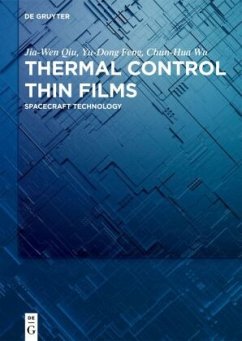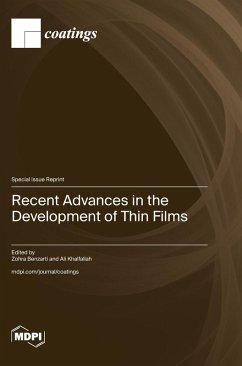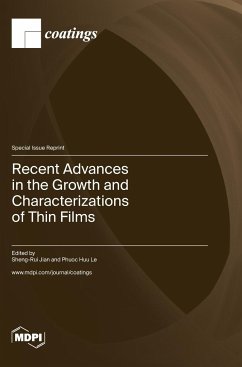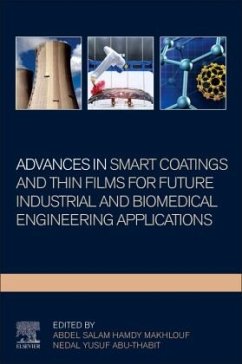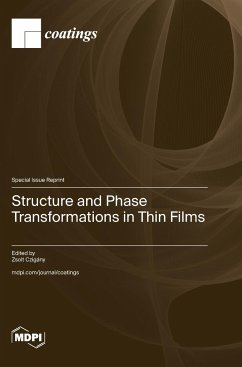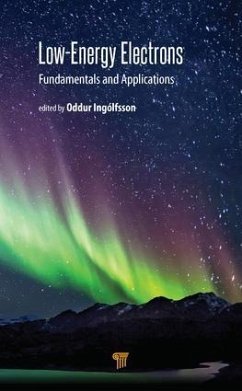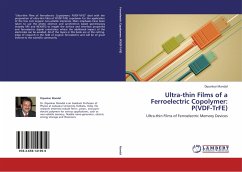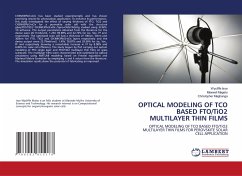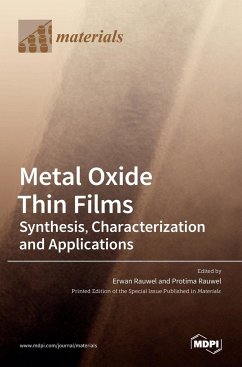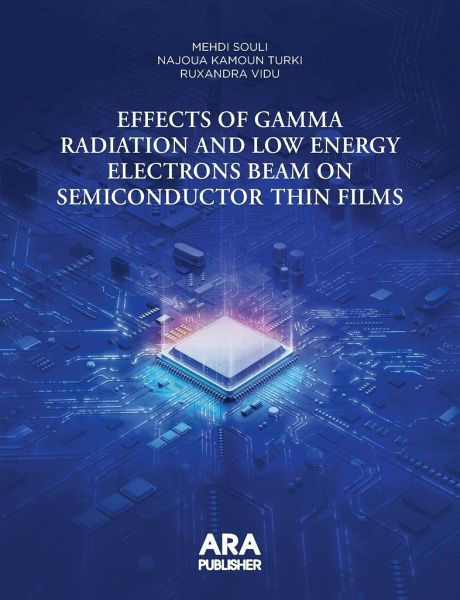
Effects of Gamma Radiation and Low Energy Electrons Beam on Semiconductor Thin Films
Versandkostenfrei!
Versandfertig in 1-2 Wochen
190,99 €
inkl. MwSt.

PAYBACK Punkte
95 °P sammeln!
Research work has been continuously dedicated by the scientific community to improve or optimize the physical properties of thin films. In this present book, we bring into the attention an important research axis developed in our research group, i.e. the use of irradiation with intense gamma radiation and electron beam energy with the aim to improve and customize the structural, optical, morphological and electrical properties of thin film semiconductors for space and terrestrial photovoltaic applications, dosimetry of ionizing radiation and photocatalysis for the depollution of water contamin...
Research work has been continuously dedicated by the scientific community to improve or optimize the physical properties of thin films. In this present book, we bring into the attention an important research axis developed in our research group, i.e. the use of irradiation with intense gamma radiation and electron beam energy with the aim to improve and customize the structural, optical, morphological and electrical properties of thin film semiconductors for space and terrestrial photovoltaic applications, dosimetry of ionizing radiation and photocatalysis for the depollution of water contaminated by organic dyes. The number of worldwide scientific contributions and publications in this area of research is considered low compared to other research areas, hence the desire to contribute to developing and enriching this research area of thin film semiconductors. Our work was carried out in collaboration with the National Center for Nuclear Sciences and Technologies (CNSTN) in Tunisia, which owns the industrial equipment for gamma irradiation. An agreement was signed between the LPMC (define LPMC) laboratory and the CNSTN to carry out several gamma irradiation campaigns for several types of materials. Another collaboration was made with the COFICAB industrial company that produces electric cables, which is a subsidiary of the CHAKIRA group, to offer us an electron beam time with their low energy electron accelerator. Irradiation by ionizing radiation is widely used in food preservation to extend their storage or marketing periods and also for the sterilization of medical products. Among the outstanding industrial applications of electron beam irradiation is its use to improve the physical properties of the polymers making up the sheaths of electrical cables. In fact, the electrons emitted by the accelerators entrain free radicals in the polymers, the recombination of which leads to an improvement in their resistance to the high temperature of fires and to harmful solvents. In addition, many research works use irradiation to study the resistance of materials to intense nuclear radiation or to increase their life spans and for certain other materials to strengthen their nuclear waste storage capacities. Hence our motivation to use gamma radiation or electron beam irradiation to try to find improvements in the physical properties of semiconductor thin films used in the photovoltaic field or photocatalysis. Indeed, irradiation could be considered as a powerful tool to modify in a controlled way the electrical, structural, optical and morphological properties of these thin films. The choice of materials was motivated by their role played in optical windows, absorbers or buffer layers, which are commonly used in the new generation of photovoltaic cells. The two families of materials are the transparent conductive oxides (TCO), such as Fe-doped In2O3, and sulfur-based compounds, such as In2S3, Cu2ZnSnS4 and Sm-doped CaSO4. The synthesis and growth of these materials have been developed and optimized in our LPMC laboratory through previous research works. To the best of our knowledge, our work on the irradiation of thin films by gamma radiation of thin films of Cu2ZnSnS4, In2S3 and In2O3 doped with iron and fluorine is novel and the results are of great interest for the scientific community. The main objective of applying irradiation is to systematically control and improve the structural, optical, morphological, or electrical properties of thin films by applying very precise doses of gamma radiation or electron beams. Irradiation can cause structural defects in crystal lattices, generate excitations, change, or transform energy levels or even break atomic bonds, which can be used to tailor the properties of thin film semiconductors for specific applications.



